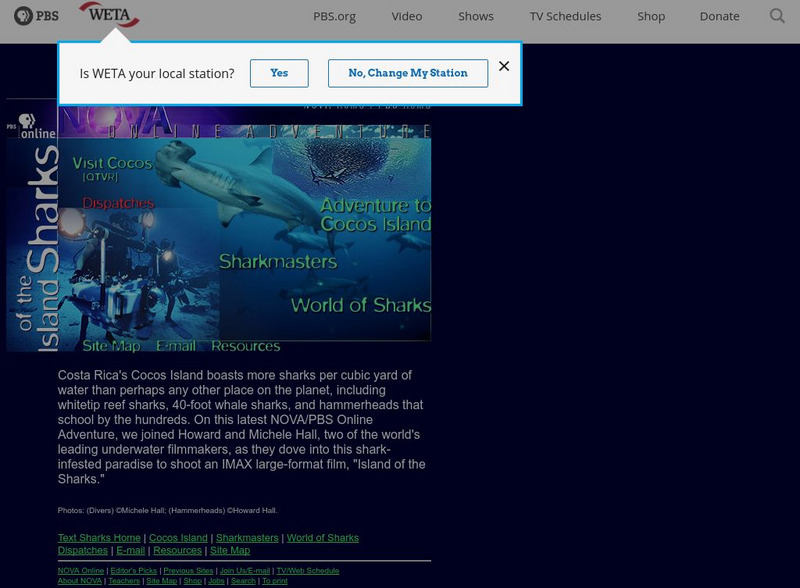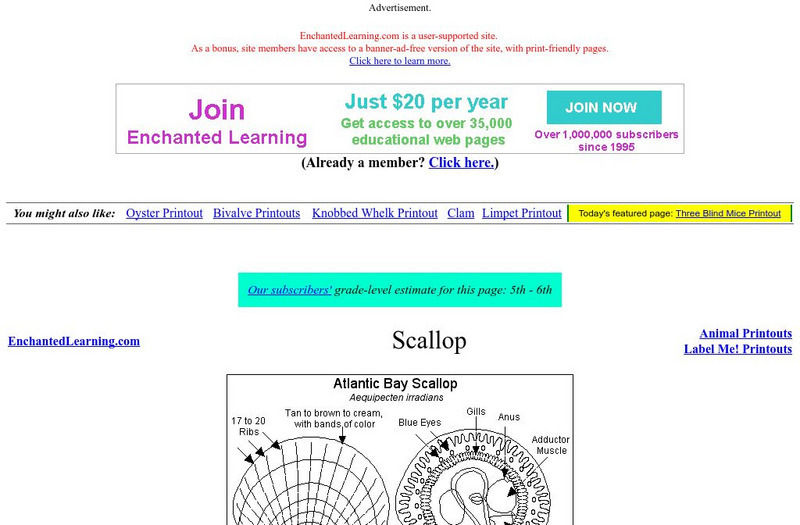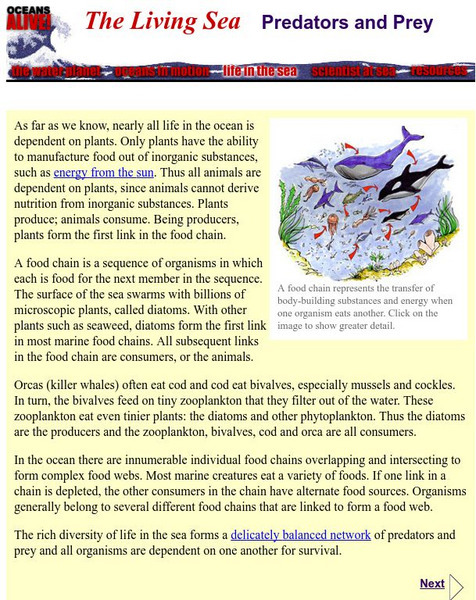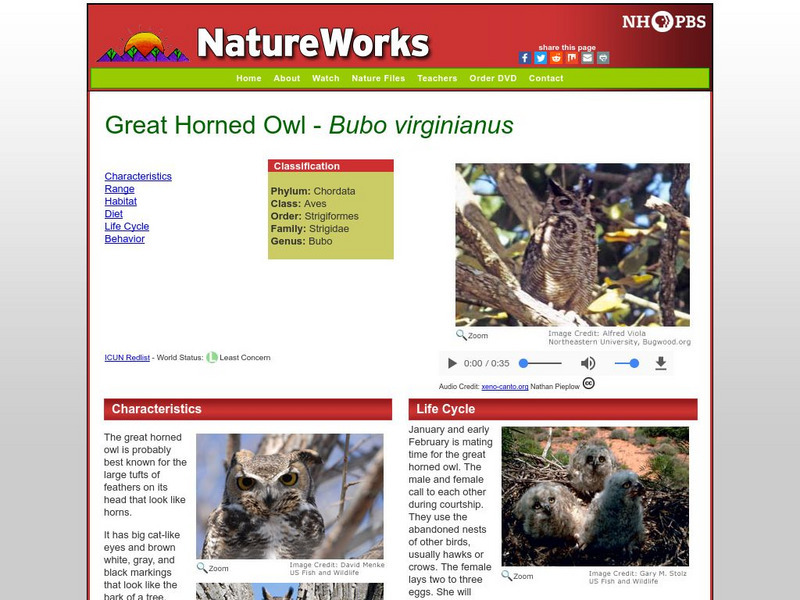PBS
Pbs Learning Media: Coral Reef Connections
Dive in and explore what makes this beautiful world so fragile. In this Web feature, from the PBS series "Evolution," discover how coevolution has shaped the ecological relationships among reef creatures.
PBS
Nova Online: Island of the Sharks
NOVA provides a unique look into the world of sharks. Explore the "World of Sharks" for a species list, the Shark-O-Matic, diagrams, vivid descriptions of close encounters and shark attacks, and more.
PBS
Pbs: Nature: Cheetahs in a Hot Spot
Discover how cheetahs are built for speed and hunting, as well as what efforts are being put forth to protect and relocate these endangered animals in the wild.
PBS
Pbs Learning Media: Shark Attack! The Hunt
This interactive module from the NOVA: "Shark Attack!" web site details the six senses that sharks use to find and capture their prey.
Utah Education Network
Uen: Macroinvertebrate Simon Says
Introduces students to the feeding adaptations found in aquatic macroinvertebrates.
University of Arizona
Feeding Habits of Marine Animals
Marine Discover at the University of Arizona posts this lesson plan and activities which integrates the feeding habits of different marine wildlife. Step by step activity along with assessment and extentions are included.
PBS
Nh Pbs: Nature Works: Bony Fish
This site identifies different characteristics and information related to Bony Fish. Find out some fun facts about these friendly fish when you explore this site.
Ed Koday
Web Archive: Ambush Bug
Ambush bugs are predators which normally lie in wait for prey. They have front legs fitted for grasping, much like that of a praying mantis. They commonly sit on a flower waiting for insects attracted to flowers. Goldenrod is a favorite...
TED Talks
Ted: Ted Ed: From the Top of the Food Chain Down: Rewilding Our World
Our planet was once populated by megafauna, big top-of-the-food-chain predators that played their part in balancing our ecosystems. When those megafauna disappear, the result is a "trophic cascade," where every part of the ecosystem...
PBS
Pbs Kids: Plum Landing: Mangroovin'
In this game, players take on the role of baby groupers, fish who grow up in the shelter of mangrove roots. They need to swim into open water to find food without falling prey to hungry predators.
Enchanted Learning
Enchanted Learning: Scallop
Contains information on scallops, a diagram, as well as their predators, anatomy, and diet.
Read Works
Read Works: Welcome to a Tropical Rain Forest
[Free Registration/Login Required] An informational text about some animals that live in a tropical rain forest. A question sheet is available to help students build skills in reading comprehension.
African Wildlife Foundation
African Wildlife Foundation: Lion
This resource takes an exploratory look at the lion. Content includes information on this animal's physical characteristics, habitat, behavior, diet, caring for the young, predators, and more.
Museum of Science
Museum of Science: The Living Sea: Predators and Prey
This Museum of Science page does an excellent job of explaining the importance of plants as producers in the sea. The food chain or food web has to start with the plants.
PBS
Nh Pbs: Nature Works: The Great Horned Owl
Explore the world of the great horned owl through this clear and concise site. This resource features information on the characteristics, habitat, food, reproduction and more of the great horned owl.
PBS
Nh Pbs: Nature Works: Jaguar
What do you want to know about jaguars? This educational resource looks at the behavior, diet, life cycle, characteristics, habitat and range of these big cats.
Ed Koday
Web Archive: Antlion
Have you ever heard of a "doodlebug"? Well, you're looking at one right up above! It is actually an insect called an antlion. The antlion gets its name because it is a voracious predator of ants and other insects. Actually, it's only the...
Science and Mathematics Initiative for Learning Enhancement (SMILE)
Smile: Teeth Identification in Omnivores, Herbivores and Carniv
In this lesson plan, students make puppets out of paper bags and use corn to give their animal (dinosaur, raccoon, etc.) the correct type of teeth based on the animal's diet.
Treehut
Suzy's World: Eye
Find out how your eyes work and try an experiment involving a cartoon flip book.














